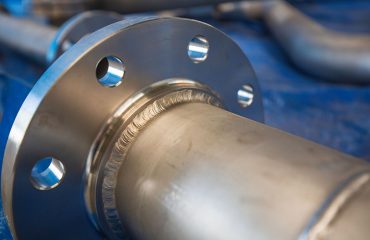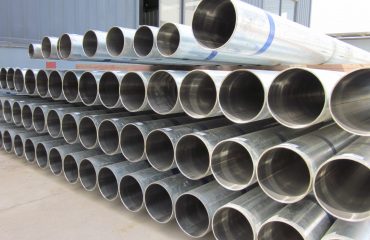Formation of X120 M Line Pipe through JCOE Technique
Introduction
The formation of X120 M line pipe using the JCOE technique is a sophisticated process that involves precise control over shaping and welding operations. This process is critical for ensuring the structural integrity and performance of line pipes used in demanding applications such as oil and gas transportation. The JCOE technique is named after the sequential steps of J-ing, C-ing, O-ing, and Expansion, which are integral to achieving the desired pipe geometry and weld quality. This article delves into the intricacies of the JCOE technique, focusing on the formation of curvature and ovality, as well as the welding joint geometry essential for producing high-strength line pipes like the X120 M grade.
1. Achieving the Required Shape
1.1 Curvature and Ovality
-
Importance of Curvature and Ovality: The initial formation of the line pipe involves achieving the required curvature and ovality, which are crucial for maintaining dimensional accuracy and structural integrity. These parameters affect the final dimensional controls after the mechanical expansion of the line pipe.
-
Plate Edge Crimping Press: The process begins with creating the necessary curvature along the edges of the TMCP (Thermo Mechanical Controlled Processing) and ACC (Accelerated Cooling Process) plate. The Plate Edge Crimping Press is used to achieve this curvature up to a minimum width of 150 mm.
-
J-C-O Press: Following edge crimping, the line pipe is formed using the J-C-O press, which sequentially bends the plate into a J-shape, then a C-shape, and finally an O-shape. This step is crucial for achieving the desired pipe geometry.
1.2 Selection of Dies
-
Role of Dies: The selection of dies with appropriate hardness and curvature is vital for the successful formation of line pipes. The dies must be tailored to the specific size, diameter, thickness, and grade of the line pipe.
-
Parameters for Die Selection: Key parameters include the diameter of the line pipe, the thickness of the line pipe, and the grade or strength level, which influences the spring-back behavior of the steel plate.
-
Spring-Back Behavior: The spring-back behavior varies between steel mills, even within the same grade of HR plate, due to differences in manufacturing procedures for producing TMCP and ACC plates.
2. Welding Joint Geometry
2.1 Importance of Welding Joint Geometry
-
Final Seam Weld Soundness: The welding joint geometry is critical for ensuring the soundness of the final seam weld during submerged arc welding. Proper joint geometry minimizes defects and enhances weld quality.
-
Joint Preparation: Precise joint preparation is essential for achieving optimal welding conditions. This involves beveling the edges of the plate to create a suitable groove for welding.
2.2 Submerged Arc Welding (SAW)
-
Welding Process: Submerged arc welding is employed to join the edges of the line pipe, creating a continuous longitudinal seam. This process involves the use of a consumable electrode and a granular flux to protect the weld zone.
-
Control of Welding Parameters: Key welding parameters, such as current, voltage, and travel speed, must be carefully controlled to ensure consistent weld quality and penetration.
3. Plate Production through TMCP and ACC
3.1 Thermo Mechanical Controlled Processing (TMCP)
-
Strength Level Achievement: The strength level of the line pipe is achieved through TMCP, which involves precise control over the chemical composition of the slab, slab thickness, and reheating temperature.
-
Rolling Temperatures: The roughing and finish rolling temperatures are critical for reducing slab thickness and achieving the desired mechanical properties.
3.2 Accelerated Cooling Process (ACC)
-
Cooling Rate: The accelerated cooling process involves rapid cooling of the plate after rolling, which enhances the mechanical properties and strength of the steel.
-
Impact on Spring-Back: The cooling rate and subsequent microstructural changes influence the spring-back behavior of the plate, affecting the final pipe geometry.
Conclusion
The formation of X120 M line pipe through the JCOE technique is a complex process that requires meticulous control over shaping and welding operations. By understanding the critical aspects of curvature, ovality, welding joint geometry, and plate production, manufacturers can produce high-strength line pipes that meet stringent performance standards. The JCOE technique, with its emphasis on precision and quality, remains a cornerstone of modern line pipe manufacturing, ensuring the reliability and safety of pipelines in demanding applications. If you have any more questions or need further details, feel free to ask!



You must be logged in to post a comment.